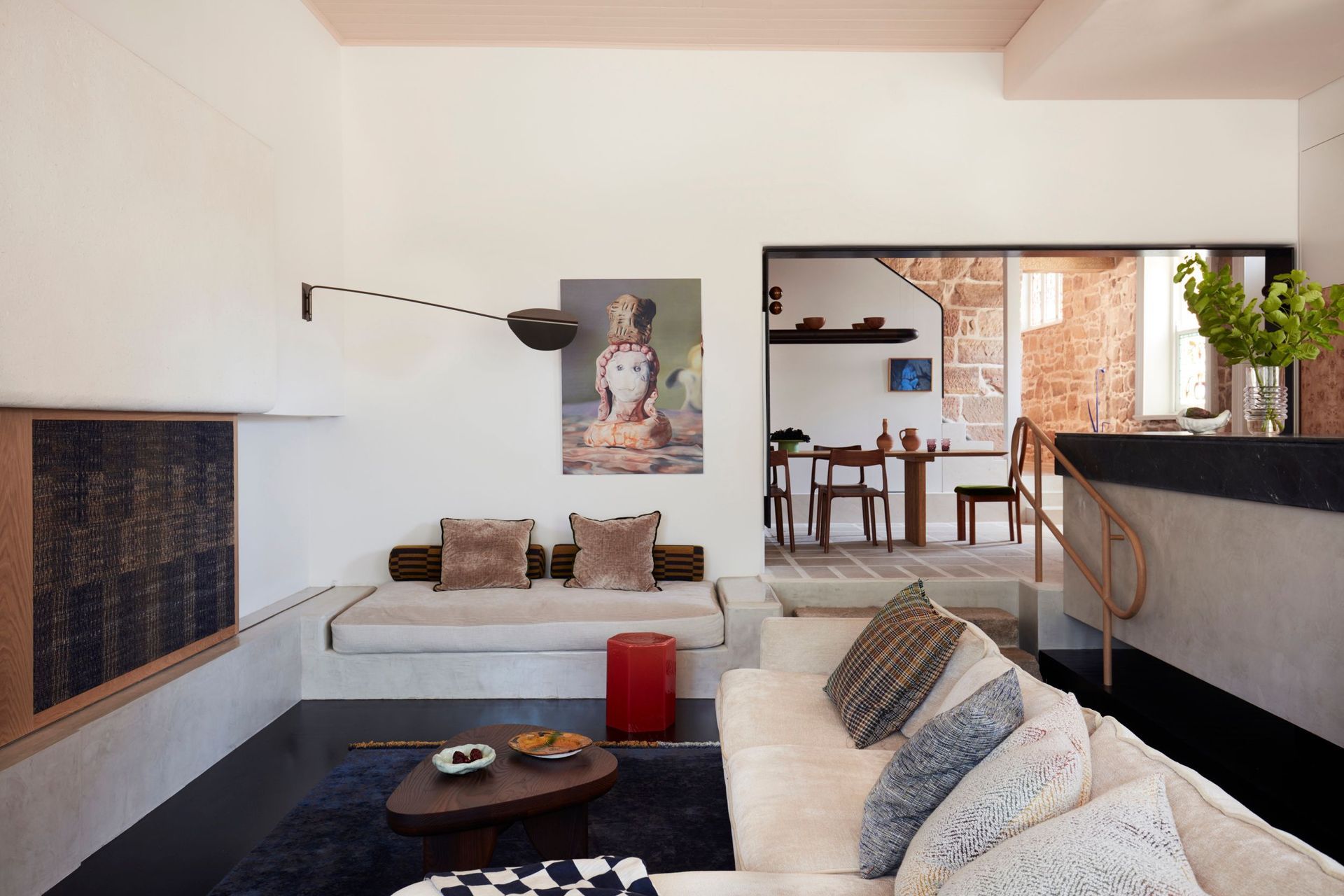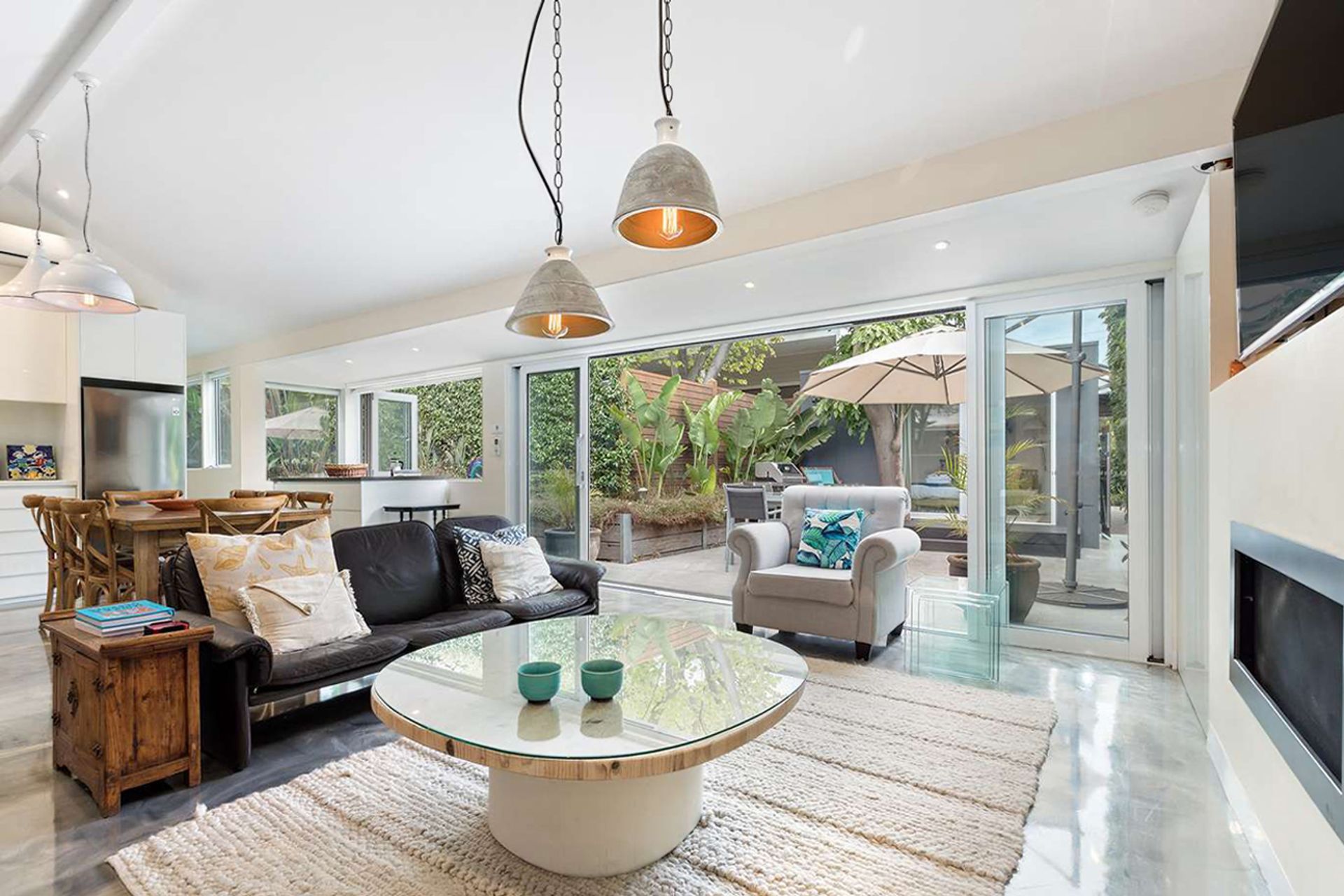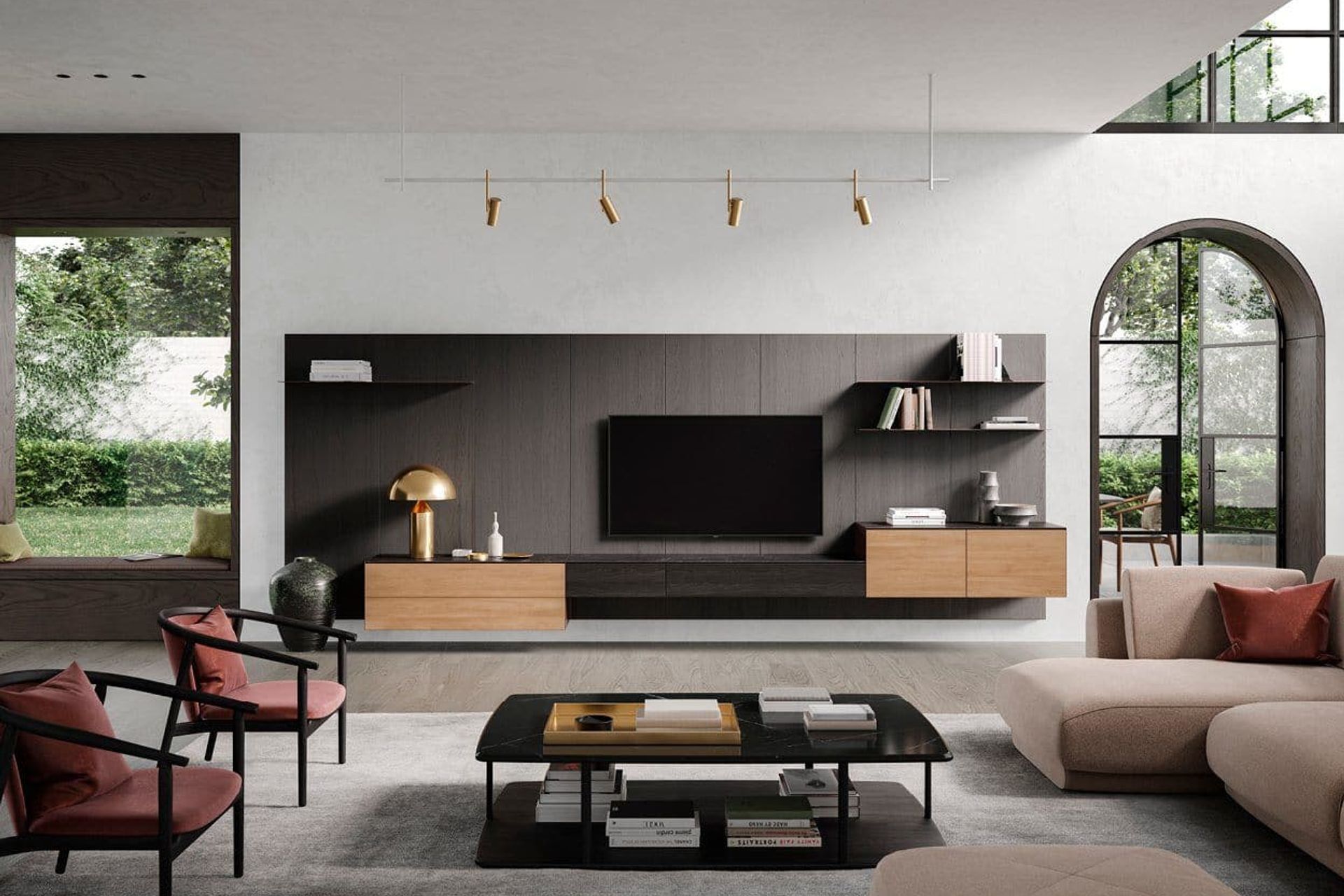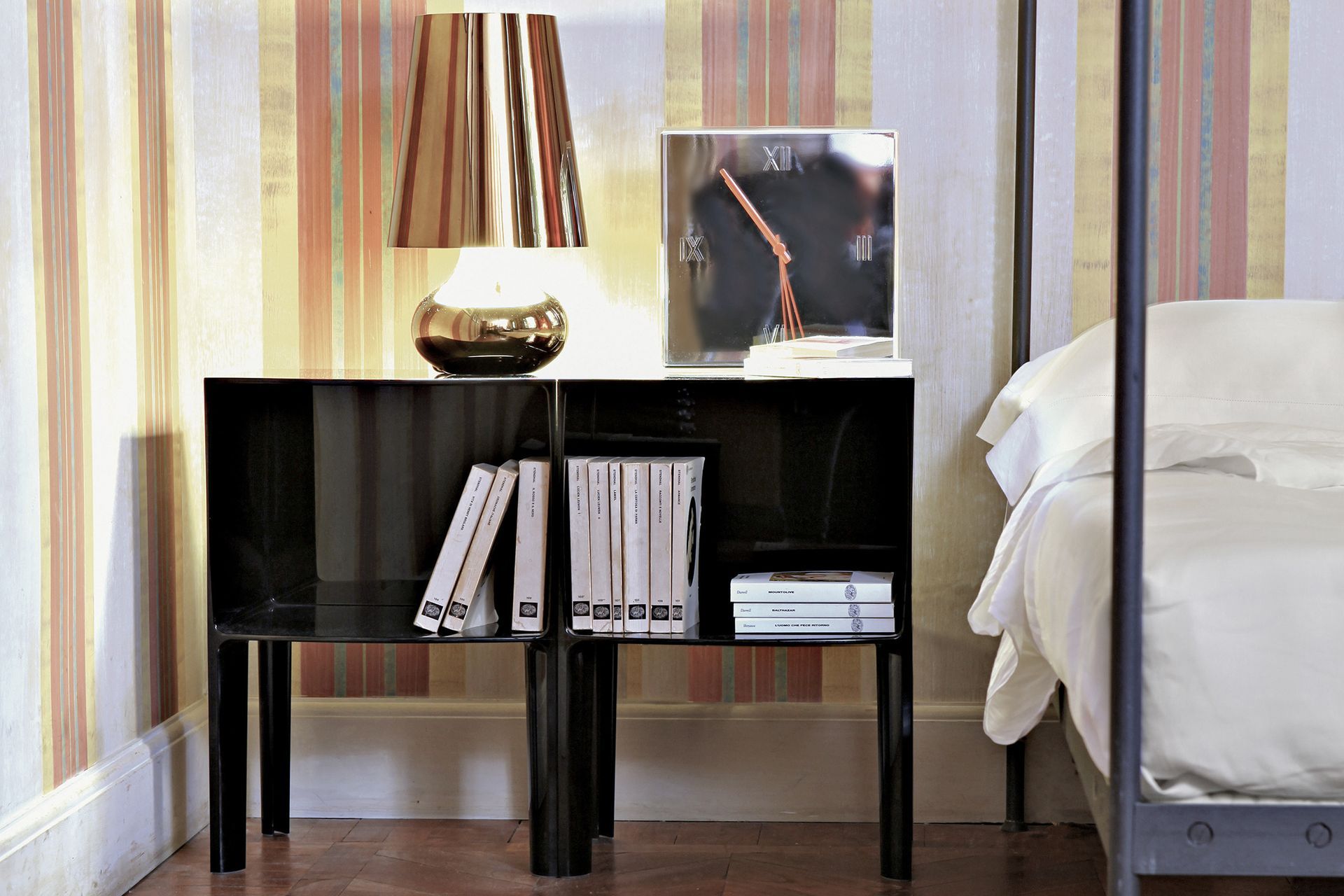Elevate your lounge: Tips and tricks for decorating a living room
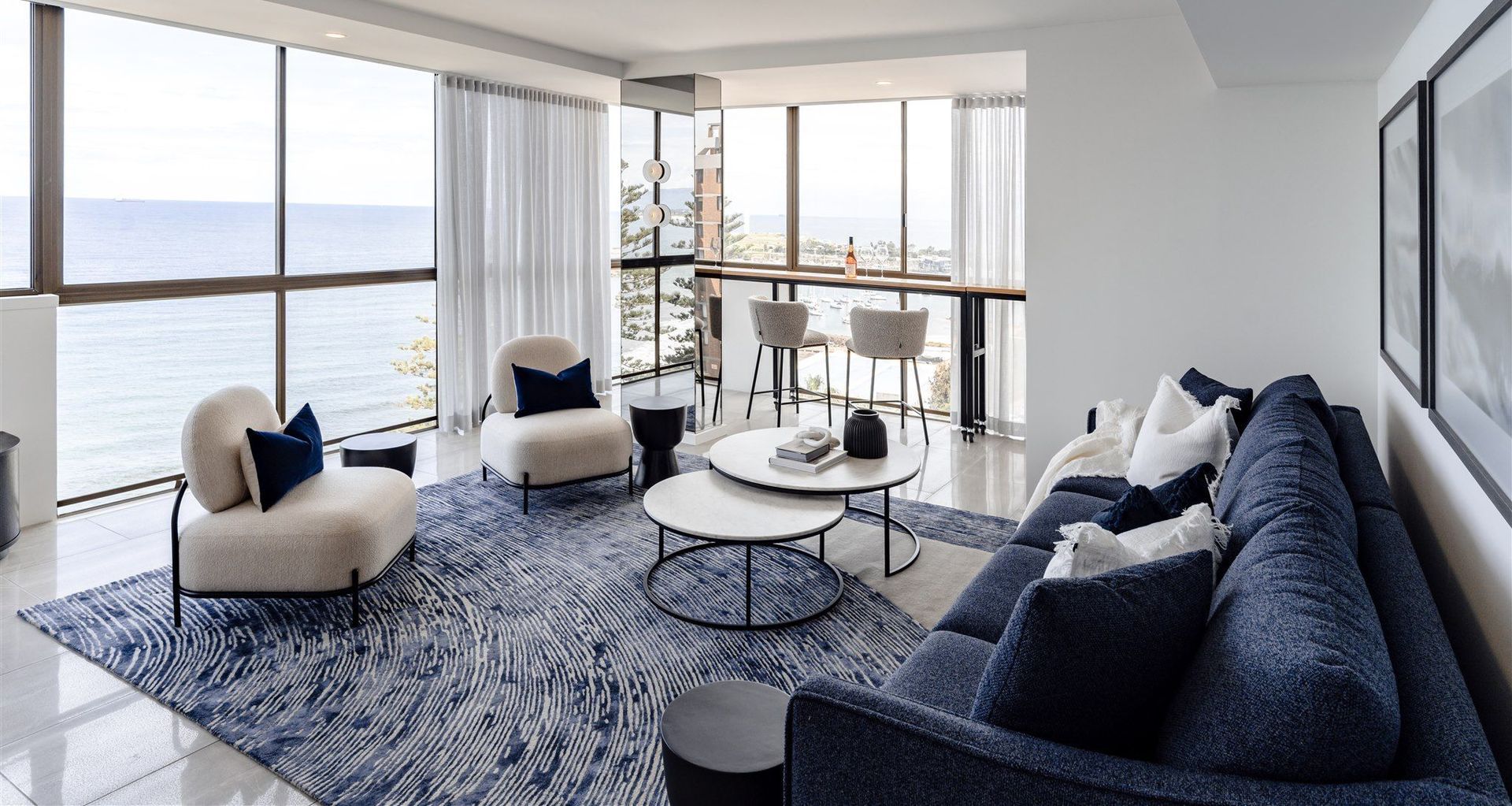
When a living room is redecorated or rejuvenated properly, it's a space that can act as a peaceful retreat for the residents of a property and any guests. To help you with the process of decorating your living room, we've put together a collection of suggestions to guide you in shaping your room into the space you've always wanted.
1. Decide on an interior design style
Getting started with decorating your living room becomes a lot easier when you can focus on one particular interior design style that you like from the beginning. It's a decision that will help you guide the entire decoration process, all the way from choosing colours, decorative elements, your furniture and more. Choosing an interior design style centres around choosing one that reflects your personality, tastes and your home's surroundings. For example, Minimalist styling makes sense if you're looking to create clutter-free spaces, while Coastal styling is a popular choice if you're looking to add a beachside vibe to your home or if you live by the sea.
Related article: How to choose an interior design style for your home
2. Think carefully about colours
Ever found yourself stepping into a room, particularly a living room, and immediately feeling a bit off, even if the furniture and decor are top-notch? This feeling often stems from a colour scheme that isn't quite right. To reduce the chances of anyone getting this feeling when entering your living room, try to choose a colour palette that works in tandem with the interior design style you've chosen and the existing colours of your home. For example, if your home is predominantly white, grey, and black, reflecting a modern minimalist style, you could consider incorporating cool blues or muted greens to give the room balance and to keep the colour scheme coordinated. Or if your home has a bohemian vibe with lots of varied, vibrant colours and patterns, slapping beige on the walls might just kill the buzz. Going for rich, earthy tones like terracotta or bright shades like emerald green can help you keep the lively, eclectic feel intact.
Related article: What colours go with a grey sofa? 9 ideas for chic styling
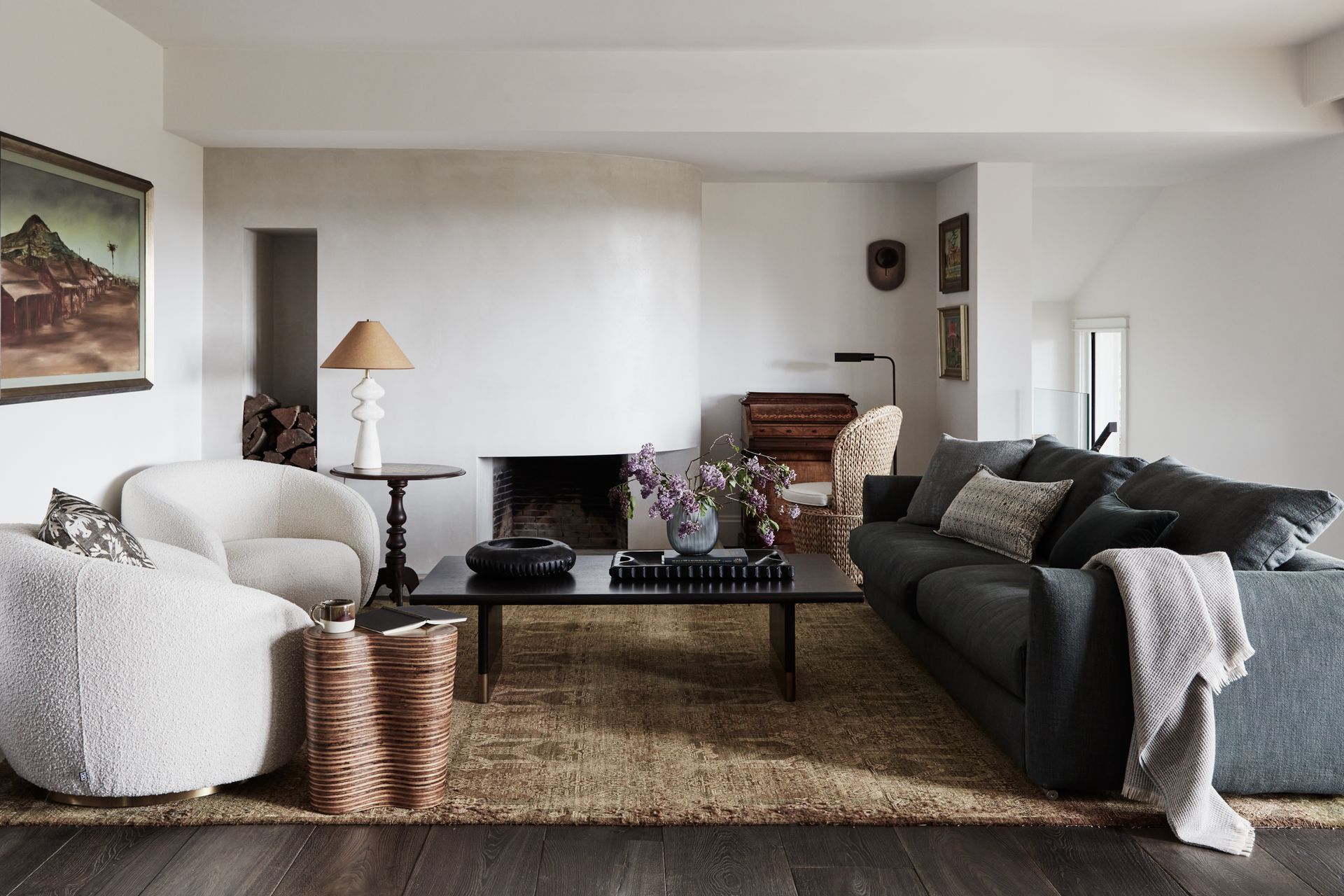
3. Let a focal point guide your style and colour choices
Another interesting idea to consider is to focus your living room decorating process around a focal point in your living room, such as a fireplace, a prized work of art or a luxurious piece of furniture. A focal point can significantly influence how you decorate the space and create a harmonious, well-balanced environment. For example, you can use colours from the piece in your room's palette; doing so means the themes and tones inherent in the artwork permeate into the room, influencing the mood and feel of the space. For instance, if you have a coastal piece of artwork that embodies soft blues, sandy beiges, and tranquil whites, weaving these colours into your walls, curtains, and accessories can allow the serene and airy essence of the coastal theme to diffuse through the room.
4. Mix and match texture and materials
The underestimated characteristics of a living room, such as the texture and materials used in the decor, furniture and other items, are no less significant than design, colour and layout. More than any other space in the house, the living room is about feeling and touch, and the use of texture and material can enhance these qualities. The approach you take will vary depending on your desired outcomes for the space, but there are some practical examples you can consider. For example, if you want to create a relaxed family room that epitomises comfort, then focusing on plush furniture and soft textures might be the route to take. If you're looking to heighten a visual response, then combining options like a glass coffee table on a coarse rug or leather chairs and fabric throw pillows are ways to create compelling contrasts. You can also combine soft and hard textures, e.g. if you have a leather sofa, which is smooth and sometimes cold to the touch, add a soft wool throw blanket and cushions in a tactile material like faux fur. This contrast not only adds visual interest but also enhances the comfort of the seating area by providing varied tactile experiences.
5. Layer your lighting
Getting the lighting right in your living room is crucial, and it's something you'll want to think about from the start. If it's not done right, it can throw off your whole setup. Think of lighting in layers: you want lights for different uses mixed together. For example, pendant lights are great for general lighting because they light up the whole room. Then, for task lighting, which is focused light you use for specific tasks like reading, you could use a straightforward floor lamp near your favourite reading chair. For accent lighting, which highlights specific areas or items, you might use picture lights to draw attention to artworks or photographs. Wall-mounted lights can also work to highlight bookshelves or other features. And don't forget about natural light - use light curtains to allow daylight in during the day and provide privacy during the evening. By having a mix of different light sources like these, you make the space more versatile and visually interesting without getting too complex.
Related article: 11 modern living room wall lighting ideas for 2024
6. Fine tune your furniture layout
Putting living room furniture in just the right spot might seem straightforward, but it often needs a bit more planning than you might initially think. Rather than leaving this as a final step, it’s something worth pondering from the get-go to avoid layout dilemmas later on. One important aspect that can impact how you’ll want to layout your furniture is what you primarily use your living room for. For example, if your living room is a place for relaxation and reading, consider creating a dedicated reading nook. Position a comfortable armchair, a side table, and a well-lit lamp in a quiet corner away from the general seating area. This layout allows peaceful reading while others can converse or watch TV without disturbing the tranquil spot.
7. Pay special attention to your walls
If you’re looking to create a living room with your own unique stamp on it then an effective way of doing this is to think about how you want to style your walls. There are a variety of wall treatments you can consider be it paint, wallpaper, murals or even decals. If you’ve already decided upon an interior design style then you can use this to guide how you style your walls. For instance, if you’ve chosen a Scandinavian interior style known for its simplicity and minimalism, your wall styling should ideally echo these characteristics. One practical way to do this could be to opt for neutral wall colours, such as white or light grey, to maintain a bright and airy vibe.
8. Don't negate storage
When you're redecorating or redesigning your living room, it's natural to think more about style and aesthetics than more practical aspects such as functionality and storage, but they're equally important. For example, storage is extremely important in this as it helps you organise your space and keep things orderly, allowing you to get the most out of it. Bookcases, cabinets, and storage trunks are all great options to consider. There are also multi-functional solutions like storage ottomans that provide storage and extra seating. Floating shelves are another popular choice, given they provide storage without consuming valuable floor space.
9. Set the stage with your flooring
If you’re happy with your colour scheme, furniture choices and layout and you’re looking at other areas of your living room for improvement then look no further than your flooring. There are a lot of different choices out there, depending on the style of your living room. For example, if you’ve opted for a cosy, traditional design for your space an oak hardwood floor could be your ally, providing a warm, timeless foundation that can be effortlessly paired with a variety of furnishings, such as a coffee table or shelving. Or, if you’re aiming for a more contemporary, sleek vibe you could consider a premium flooring option such as a vinyl floor, or a polished concrete floor, which looks particularly at home in an industrial style living room.
Related article: 11 popular types of flooring to consider for your home
10. Place your mirrors strategically
Mirrors are versatile additions to any living room, both for their decorative and functional purposes. Their most obvious functional benefit is the reflection of the living room that mirrors provide, which can notably enhance the sense of spaciousness. Clever placement, such as positioning them near or opposite a window, will bounce natural light into the room, making it feel brighter, more welcoming, and airy. The strategic use of mirrors can also cleverly highlight particular architectural or decorative elements of a room by reflecting them, which subtly doubles their visual impact. Stylish mirrors, such as freestanding mirrors or those with bold, ornate, or geometrically interesting frames, can also serve as potent aesthetic elements, potentially becoming a room's focal point. Integrating mirrors with varied styles and periods can create a curated, eclectic vibe, while mirrors with hidden storage or mirrored furniture pieces can merge functionality with style, providing practical solutions without compromising on visual appeal.
Related article: 7 ways mirrors can make your rooms look bigger

11. Inject some freshness with plants and greenery
Another way to inject life into your living room is to incorporate elements of nature in the form of indoor plants and greenery. The presence of plants can add a fresh sense of vitality to a living space that can create an incredibly soothing atmosphere. They also are a fantastic natural air filter, again an excellent calming trait. Well-known indoor plants such as snake plants or peace lilies can add a fresh sense of vitality to a room. Visually, indoor plants are incredibly diverse, with many species with vastly different physical qualities, allowing you to find something that personally appeals. With a few placed throughout your living room, perhaps on a coffee table or within a bookcase, you'll be adding some nice natural accents that will make your room a more inviting space.
12. Don't forget the accessories
Sometimes, little things can make a big difference when decorating a living room and it's this attention to detail that should come to the fore when accessorising. Decorative items like vases, sculptures, ornaments, throw pillows, coffee table books etc, always get noticed and contribute to the mood and atmosphere of a space in a big way. With that in mind, it's important to be selective with your choices. Pick items that will enhance a room's styling in a positive way, thinking about the impact they are likely to have. By taking a holistic viewpoint, you'll ensure that none of your choices, no matter how small, disrupt the appearance and atmosphere of your living space.
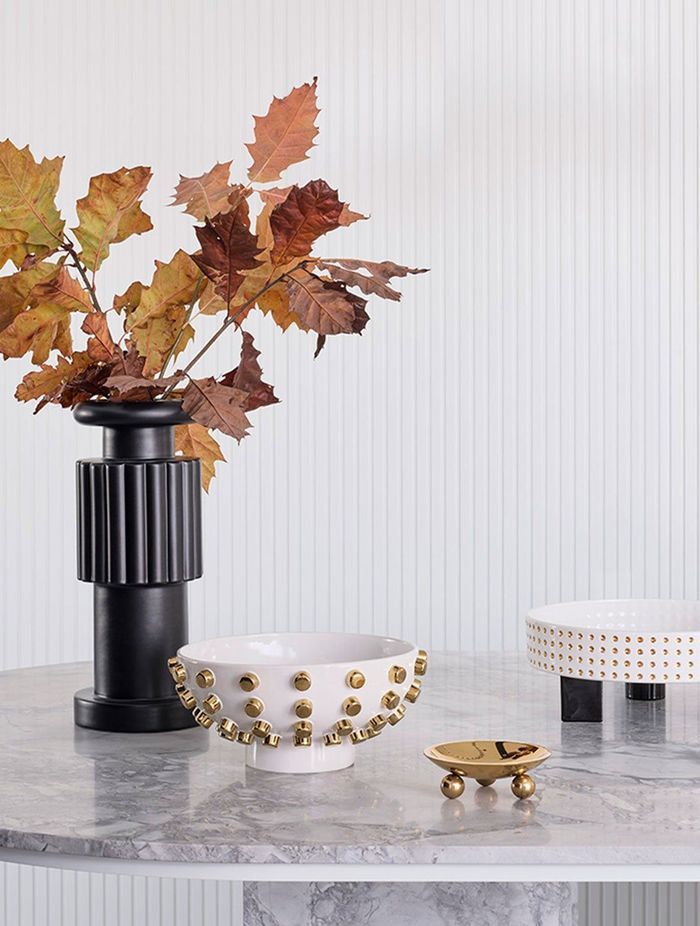
13. Incorporate personal touches
Your living room should reflect your personality, and one of the best ways to achieve this is by incorporating personal items into your decor. Family photographs in beautiful frames, treasured heirlooms, or travel souvenirs can add warmth and tell a unique story. These personal touches make the space feel truly your own and invite guests to connect with your home on a deeper level. You can also display handmade artwork or creations that hold meaning for you, further enhancing the room’s character.
Decorate your living room your way
Hopefully, you now have some ideas for your own living room decorating project. You may want to implement one or a few of these tips or try a few ideas of your own. The key is to consider your living room’s purpose and desired appearance, shaping your decor choices around these aspects. By doing this, you'll create a space that will be functional and enjoyable for years to come.
This article was updated on 2th, November 2024
Browse all of ArchiPro’s high-quality home living products


